Savannahs are a unique ecosystem characterized by a mix of woodlands and grasslands. Savannahs exist on several continents. They are most prominent in Africa, Australia, and certain parts of South America.
Savannahs across the globe have developed as highly unique ecosystems. Oftentimes, they support biodiversities that are just as unique. Many of the plants that thrive in savannahs live nowhere else on Earth.
Many savannahs across the globe are threatened due to deforestation, livestock impacts, and fires. Educating oneself on these habitats can prompt people to take action to attempt to preserve these fragile habitats.
To celebrate the amazing plant life that calls the savannah home, here is a list of some of the notable plants that exist in this beautiful and fragile ecosystem.
1. African Baobab
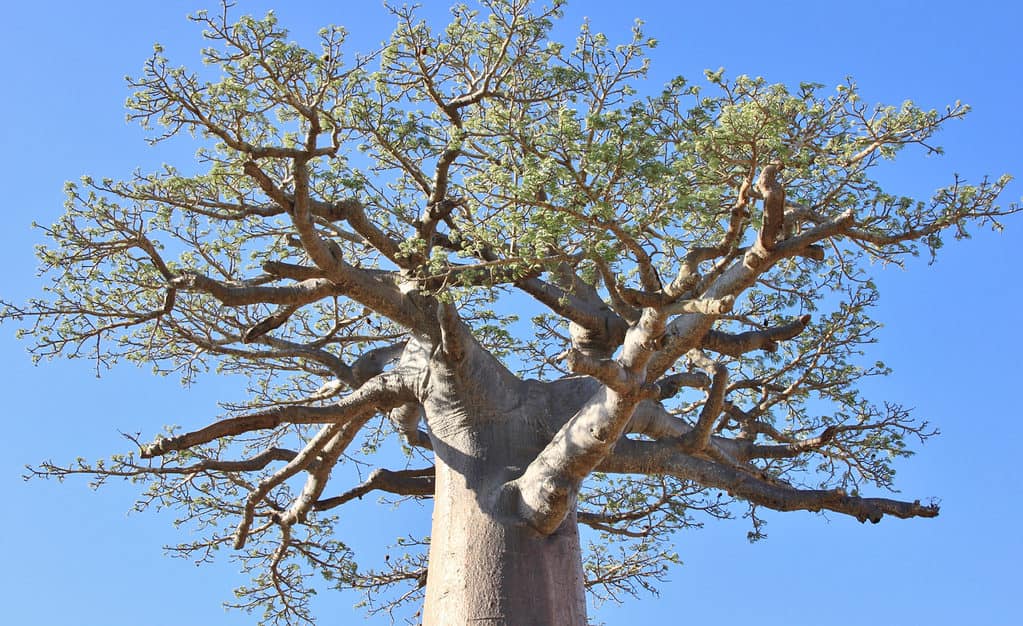
Baobabs have a contorted and surreal appearance.
©Ragulina/Shutterstock.com
Starting the list off is one of the most iconic trees in the African savannah. This references the bizarre and beautiful African Baobab (Adansonia digitata) tree. Baobabs have distinctive bulbous shapes that are unmistakable. They are also notable for the cultural significance they hold for many of the peoples of Africa. Baobabs are long-lived and grow to massive heights. Some venerable specimens can live to be 2,000 years old, and grow to be up to 100 feet tall.
Baobabs also have several culinary uses. The leaves are eaten as a leafy green vegetable, and the fruits that they produce are highly nutritious. They are significant sources of Vitamin C, Potassium, Carbohydrates, and Phosphorus. Some cultures have even utilized the fermented Baobab fruit in the utilization of beermaking.
Aside from their pragmatic uses, Baobabs hold cultural and spiritual significance for many people in this region. They often serve as meeting places for funerals, speeches, and important meetings.
2. Golden Wattle
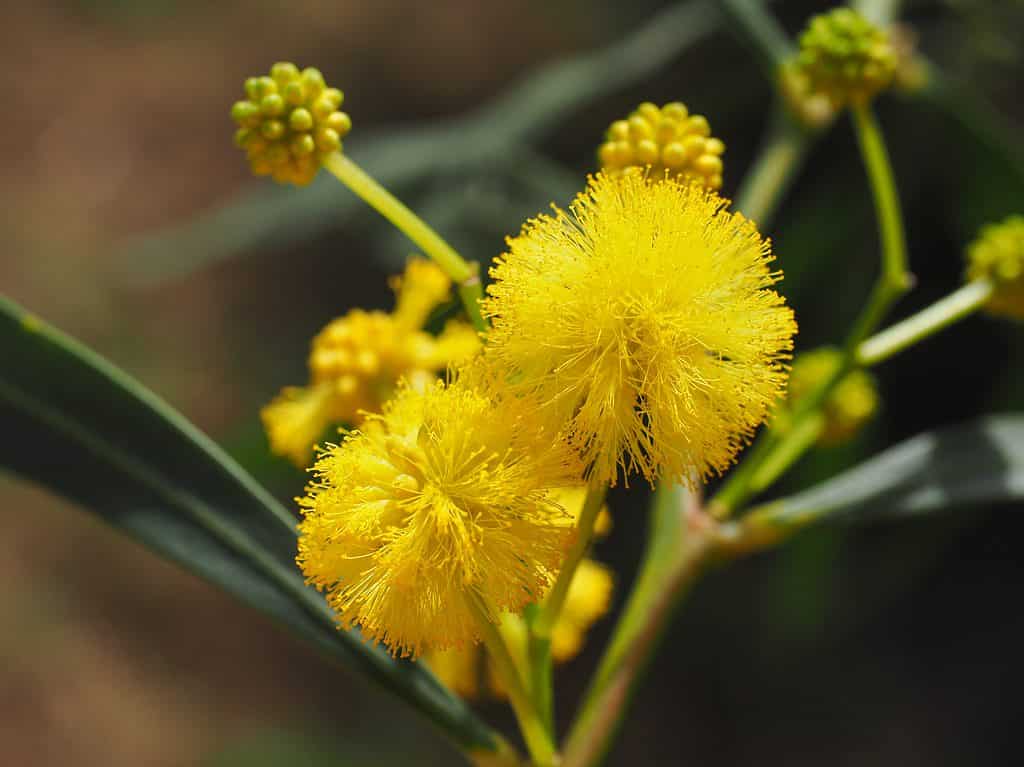
The distinctive inflorescence of the Golden Wattle tree.
©Life Collection Photography/Shutterstock.com
Wattle is a colloquial name given to a subspecies of Acacia tree that grows plentifully in the Australian outback. The Golden Wattle (Acacia pyracantha) is one of the most striking examples of these trees. This largely owes to the large golden phyllodes that they produce. A blossoming of these golden puffs can produce quite a striking visual display.
This has lent the Golden Wattle much cultural and societal significance. This is true both within Australian Indigenous culture, as well as within contemporary Australian society. The Golden Wattle has served as the informal emblematic plant of Australia since its inception.
Golden Wattles have many other practical purposes. Their sap produces an interesting scent that’s used in perfume. The Aboriginal Australians also chew the gum of this tree as chewing gum.
3. Sandpaper Trees
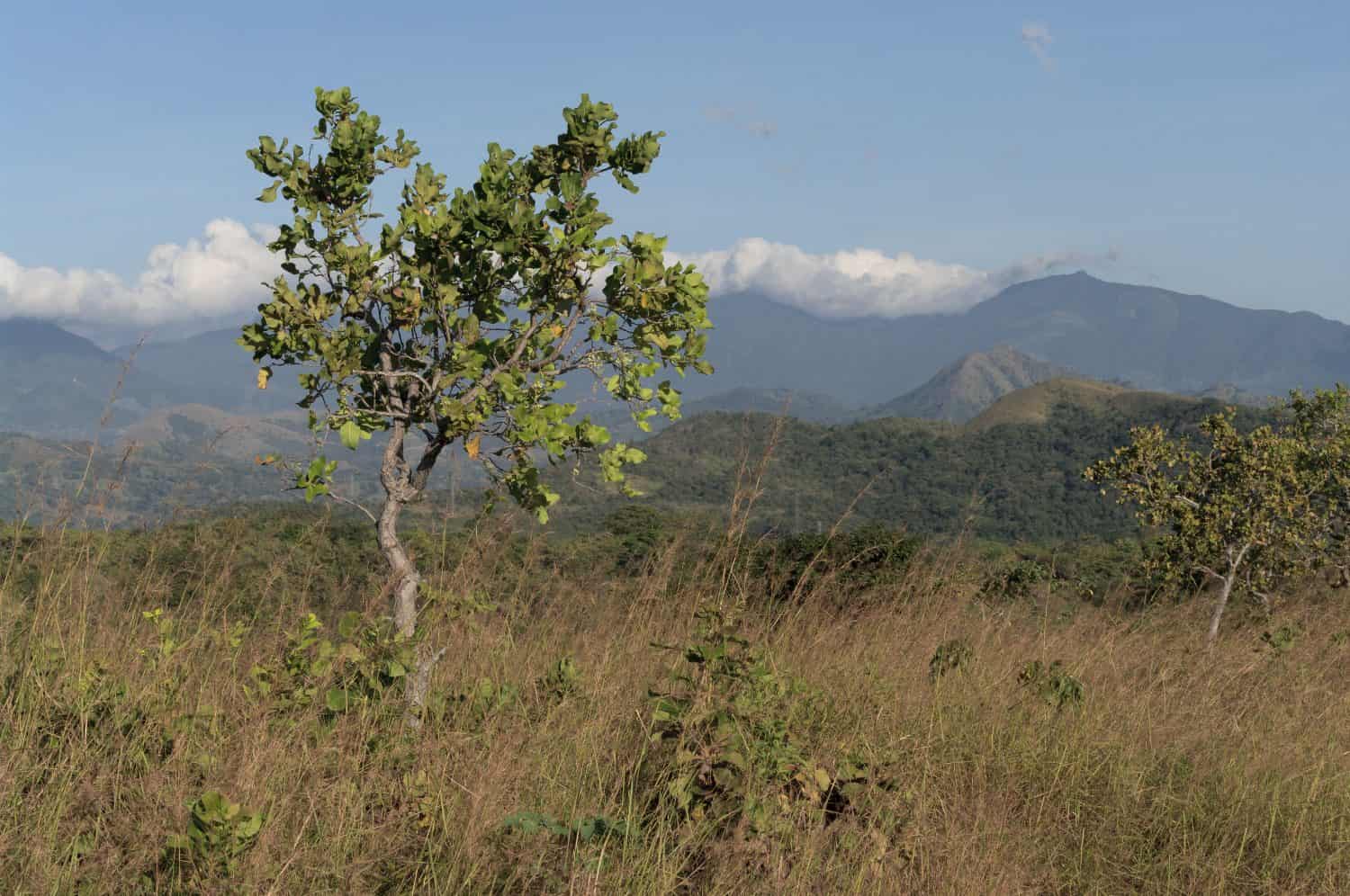
A Sandpaper Tree in a South American savannah environment.
©Angel DiBilio/Shutterstock.com
Sandpaper Trees are semi-deciduous trees that live in the savannahs of South America. These trees grow as ornamentals in Central and South America. In their native habitat, they stick out in the surrounding landscapes. This is partially due to their distinctive bushy tops and crooked thick trunks.
Sandpaper Trees also produce edible fruits and seeds. They are widely used by societies in South America for a variety of purposes. There is also some interest in its anti-inflammatory and analgesic properties in herbalism.
4. Screw Pine

The angular leaves of farmed Screw Pines.
©MollyNZ/ via Getty Images
Screw Pine is a blanket term that refers to a large group of monocot palm trees that are found across the world in a genus known as Pandanus. Several species of Screw Pines live in the savannah environments of Madagascar.
Screw Pines are versatile plants that have multiple uses for people across the globe. Their fibrous nature has made them a popular choice for weaving baskets and textiles, including sails and blankets.
In Southeast Asia, the plant is a popular flavoring agent, lending it the nickname “The Vanilla of Asia”. In many countries, such as Malaysia and Thailand, one can find Screw Pine flavored cakes and candy.
5. Elephant Grass

This species of grass is popular with farmers for its ability to fertilize soil naturally.
©muralird2008/Shutterstock.com
Elephant Grass (Cenchrus purpureus) is one of the emblematic species of the African Savannah. It blankets much of these environs with charismatic, swaying stalks that have become synonymous with their parent environment.
Elephant Grass is an important fodder crop in east Africa, aiding in the subsequent agricultural yield of dozens of other crops. In these areas, the plant has found use as a fire and windbreak. This versatile plant is also under investigation as a biofuel and plastic substitute.
6. Miombo

These woodlands provide food and sustenance to both humans and animals.
©Nicholas Case Wightman/Shutterstock.com
Miombo is a common name for a set of trees from the family Brachystegia. These distinctive deciduous trees give the name to the ecosystems known as miombo woodlands. These woodlands are a common site in central and southern Africa.
Miombo trees provide food and shelter for many species of animals. Some examples include the African Elephant (Loxodonta africana), African Wild Dog (Lycaon pictus), and Sable Antelope. Millions of people in Africa also depend on these woodlands and the resources and sustenance that they provide.
7. Spine-Leaved Monkey Orange
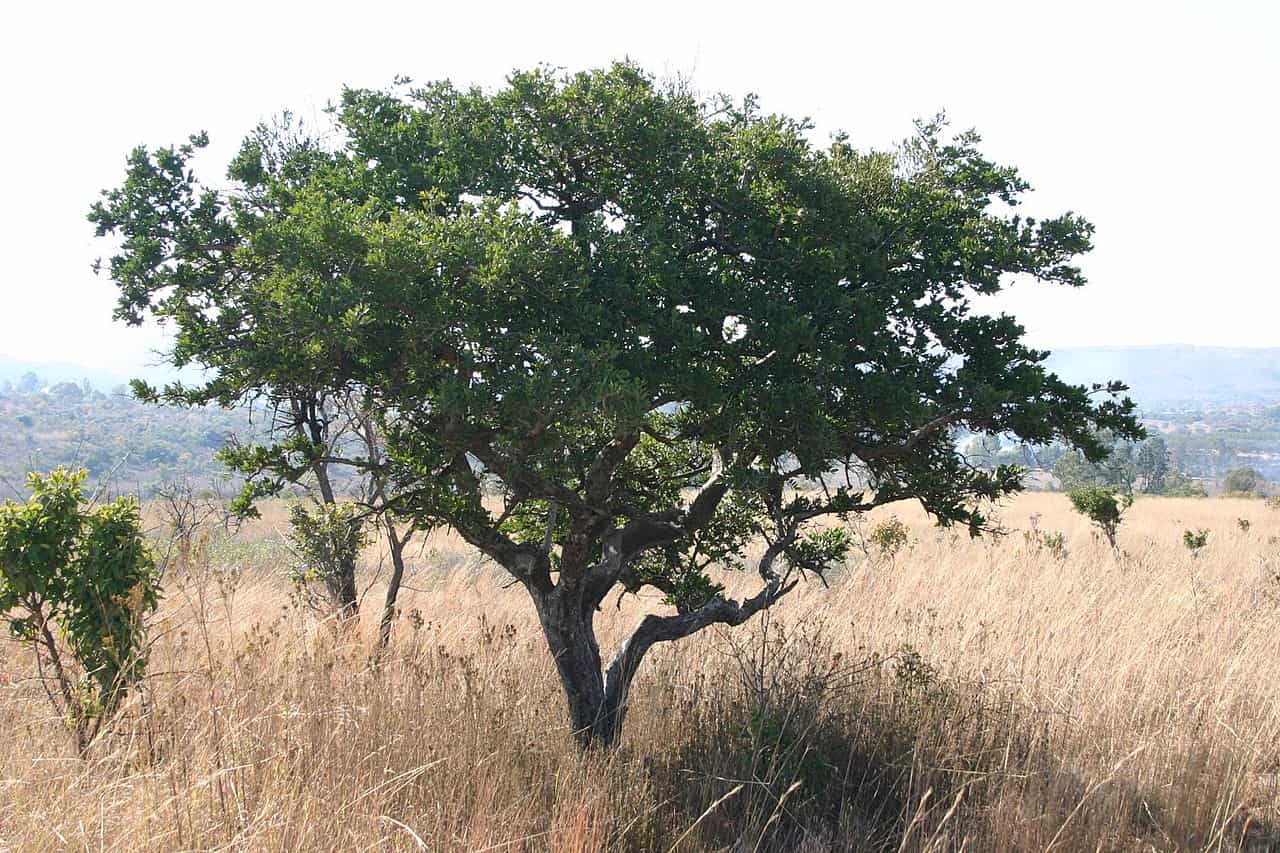
The tangled briar of the humorously-named Spine-Leaved Monkey Orange.
©Rotational, Public domain, via Wikimedia Commons – License
Above is the colorful common name of a plant (Strychnos pungens) in the genus Stryga. This species encompasses many trees that dot the savannas of Southern and Eastern Africa. This plant grows to be about 15 feet tall, and produces a distinctive globular fruit that’s usually a pale green hue.
Spine-Leaved Monkey Oranges are somewhat picky in terms of the climate that they prefer. They will only produce fruit in years with plentiful rain. This fruit is edible but has poisonous seeds that should be avoided. The tree is a close relative to the tree that has given the world strychnine, a highly poisonous compound that is a potent pesticide.
8. Jackalberry

Jackalberries are often found lining the banks of large rivers.
©Hansie Oosthuizen/Shutterstock.com
The Jackalberry (Diospyros mespeliformis) is a large evergreen tree that lives in Central and Southern Africa. True to its name, wild jackals (Canis aureus) are fond of the berries that this tree produces.
Humans can also eat the fruits of these trees, and their flavor is somewhat similar to lemons. The fruit is ground into flour, and used in brewing of beer and other forms of alcohol.
Jackalberries have many medicinal purposes for the people who live close to them. Their roots can purge parasites from the digestive tract and are also under study for their positive effects on leprosy.
Also of interest is the hardiness of their wood, which is impervious to being eaten by termites. This makes the wood quite valuable, as the tree often grows in areas with large termite populations.
9. Candelabra Tree

A Candelabra Tree and its distinctive crown of branches.
©Papa Bravo/Shutterstock.com
The beautiful Candelabra Tree (Euphorbia candelabra) is a distinctive succulent that can grow to massive heights, at least as far as succulents go. Many individuals reach heights over 35 feet tall.
The Candelabra Tree is unmistakable and has earned its name due to the crown of succulent branches that curve above its central stalk. The tree has some rather potent medicinal qualities, some of which are under study.
Some scientists have found that compounds in the tree have positive benefits for those suffering from HIV and Leukemia. It has shown promise in protecting and strengthening the immune systems of such individuals. In traditional medicine, the Candelabra Tree is employed in remedies for maladies as diverse as coughs, tuberculosis, malaria, and syphilis. Ash from burnt trees can treat eye infections.
10. Rhodes Grass
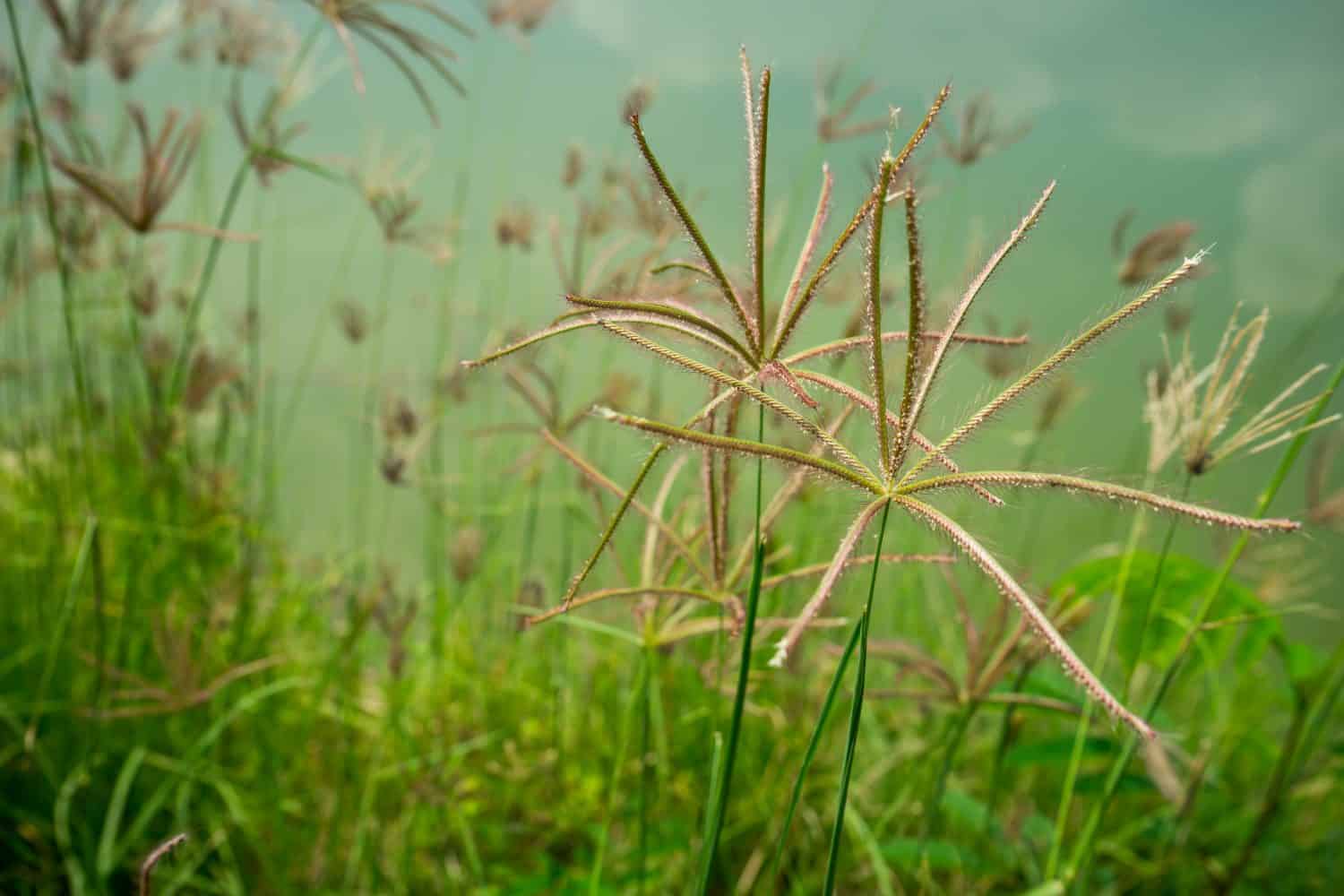
This species of grass has a variety of utilitarian uses in agriculture.
©Surchesth/Shutterstock.com
Rhodes Grass (Chloris gayana) is another beautiful species of grass that blankets the savannahs of Africa. Its swaying stalks have become synonymous with the landscape in many respects.
Rhodes Grass is native to Africa but has spread across the world as an invasive species. Like Elephant Grass, the grass is a fertilizer crop for other types of plants in its native range.
Rhodes Grass is under investigation by farmers and humanitarian aid workers. It’s under study for its potential as a component of sustainable agricultural practices. Its ability to improve soil health and promote the growth of other agricultural crops is of interest. This is especially true for those fighting for food security in these regions.
11. Espeletia
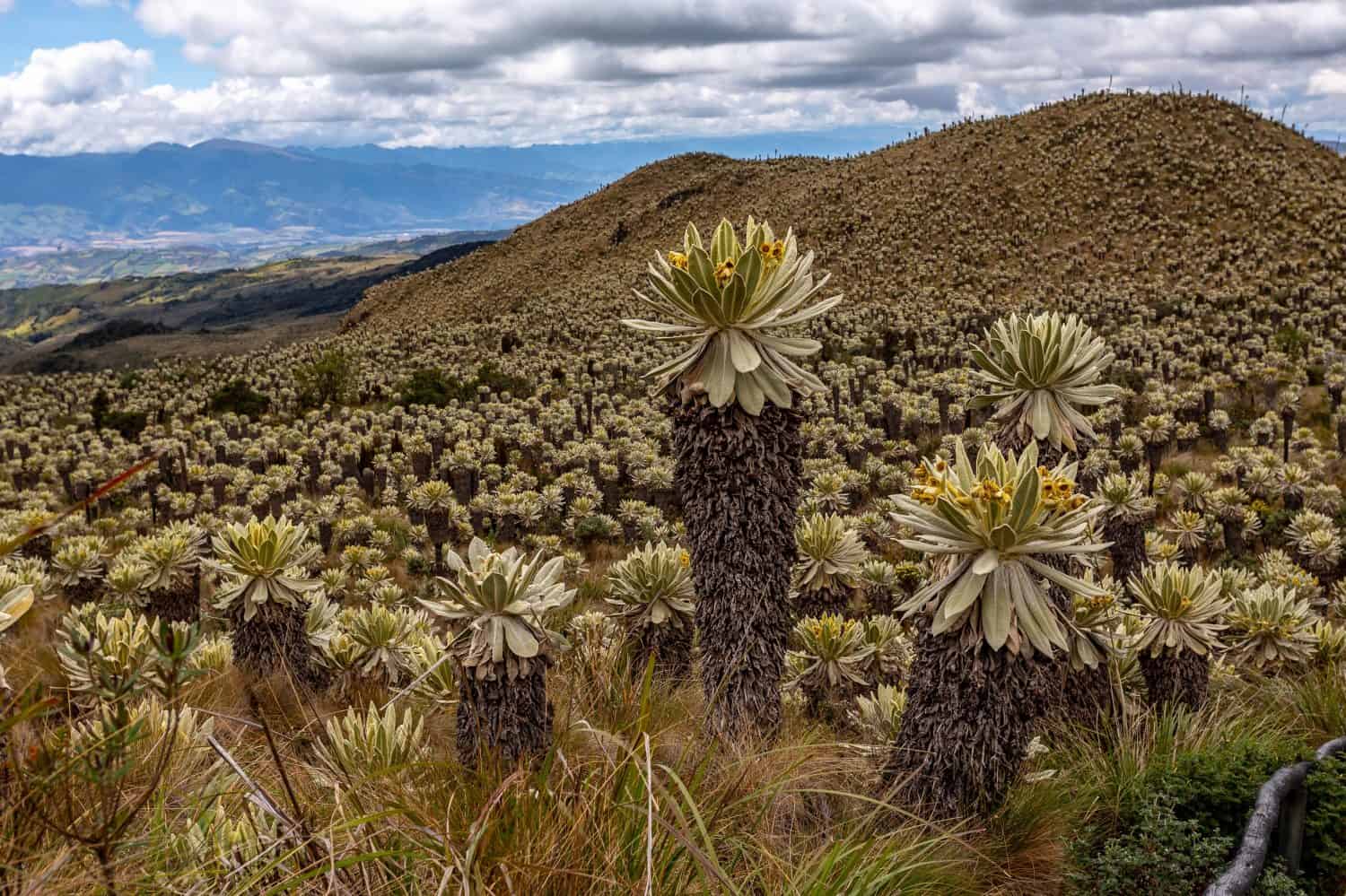
Frailjones cover a hillside in the high-altitude savannas of Colombia.
©Ecuadorpostales/Shutterstock.com
Espeletia, also known by its common name in Spanish, Frailjones, is a strange and wonderful genus of plants that grows in the high alpine savannas of South America. There are many subspecies of these plants. They primarily exist in Colombia in the steep Andean Plateaus.
The micro-habitat that these plants inhabit is the Paramo, a high-altitude savannah in the Andes. This ecosystem is of interest to scientists due to the fact that it seems to be one of the “newest” and most rapidly evolving ecosystems in the world. Of course, new is a relative term when you’re dealing with the speed of evolution – in that world, a million years goes by in the blink of an eye.
Espeletia is notable for its water-saving abilities that contribute heavily to its surrounding ecosystem. The massive leaves of these plants capture unusually high amounts of rainwater which they then deposit into the surrounding soil. This water eventually ends up forming rivers, lakes, and so on.
12. Bushwillows

Bushwillow seed pod. These seed pods are have heavy value in herbal medicine.
©Pong Wira/Shutterstock.com
Bushwillows are the common name of the genus Combretum, a shrub that peppers the savannah plains of Africa. Despite their name, these plants are not actually related to the willows found in North America.
There are over 250 species of Bushwillows worldwide. Like many of the plants on this list, the genus has medicinal uses. It is employed by many groups of people who live close to where it grows. Some of its uses include as an antiviral, and as a deworming agent for parasites. Bushwillows came under some scrutiny for their anti-cancer potential several years ago, but so far studies have proved inconclusive.
13. Eucalyptus
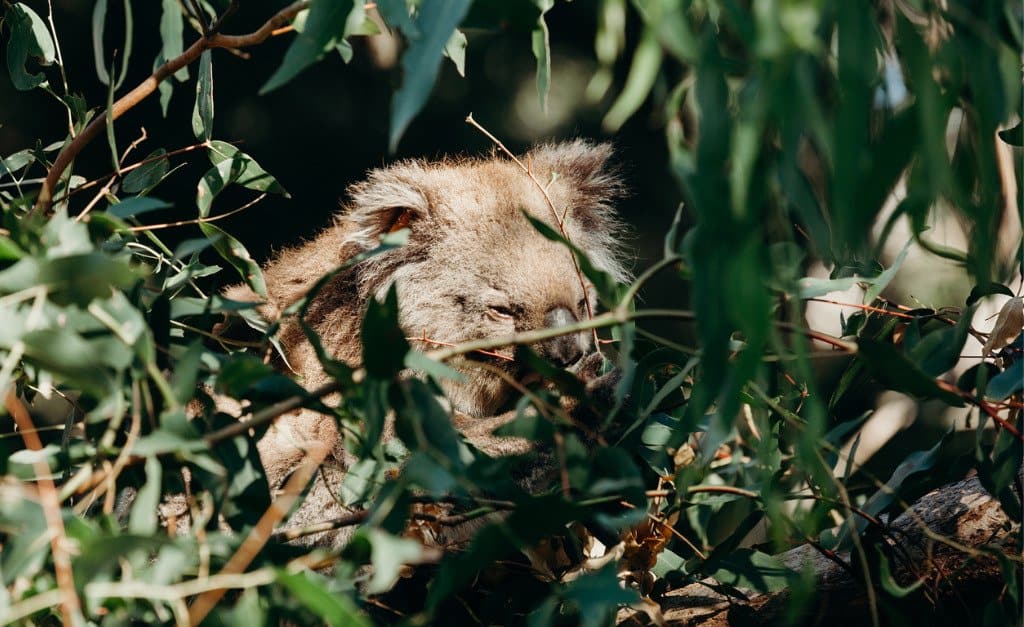
Koalas are an animal that exclusively eats eucalyptus leaves.
©iStock.com/Daviles
Eucalyptus is practically synonymous with Australia, being the predominant tree in many of the country’s ecosystems. These aromatic trees come in a variety of shapes and sizes, providing food and sustenance to some of Australia’s most iconic wildlife species.
Eucalyptus produce a distinctive aroma that shows up everywhere from perfumes to shampoos. It is widely believed that the leaves of these trees can help to clear the sinuses and help one breathe easier.
Eucalyptus are voracious growers and have become an invasive plant across the globe. This is perhaps most famously the case in California, where eucalyptus has choked out many native plants.
The photo featured at the top of this post is © iStock.com/Dr Juergen Bochynek
Thank you for reading! Have some feedback for us? Contact the AZ Animals editorial team.






